Last Friday I took a longarm orientation class at It Seams to Be Sew in Sugar Land and it was SUPER fun. I loved it so much that I already signed up for another block of time on my next free flex day off work (which sadly isn’t for a month). And — if it was a realistic option for me right now — I would totally be ready to drop $10k on a longarm of my own! Ha!
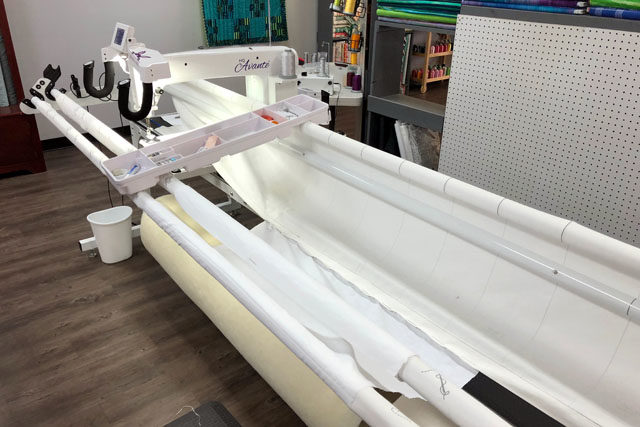
The biggest downside to the experience is simply that the shop is far away — a 45 minute drive, all on the highway, and that’s if there’s no traffic. But it’s better than nothing, and hey, I can always listen to podcasts and enjoy some alone time in the car.
When I arrived, Lana (the shop owner) started showing me the ropes. The shop has two Handiquilter machines, an Avante and an Amara. I was working on the Avante, but the other one looked very similar. (There was someone tackling her first quilt on that machine, so I was watching her as she worked as well.)
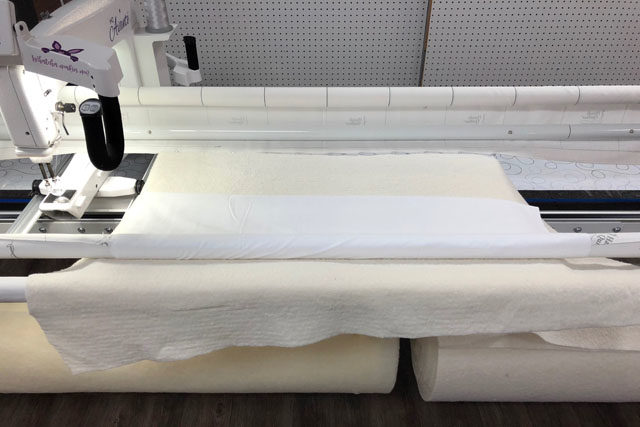
She taught me how to pin my backing and quilt top (both just pieces of plain white fabric for this class) to the leaders and get things lined up and smooth. Then we loaded in some batting and it was time to get started!
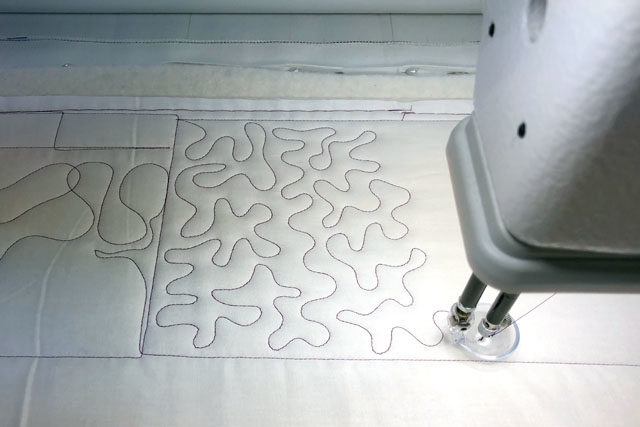
After basting the quilt top down, she showed me how to operate the machine. It was surprisingly simple — you can just set stitch length and speed like my sewing machine at home, press the start button, and off you go! Of course there are a lot of other options, but we kept it simple for now. I used the stitch regulator to keep everything neat but maybe in the future I’ll try the manual mode.
The first thing I tried was stippling. It was great! Honestly I could finish a quilt like that tomorrow and be totally happy with the result. Lana said the key is to keep spacing even, and my engineer’s brain is good at that.
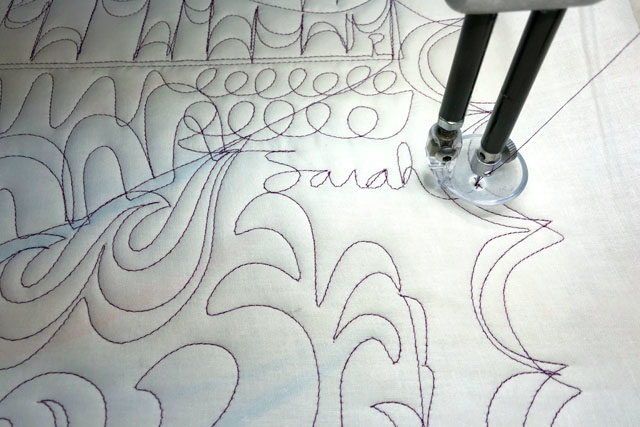
(Of course I had to quilt my name, right?)
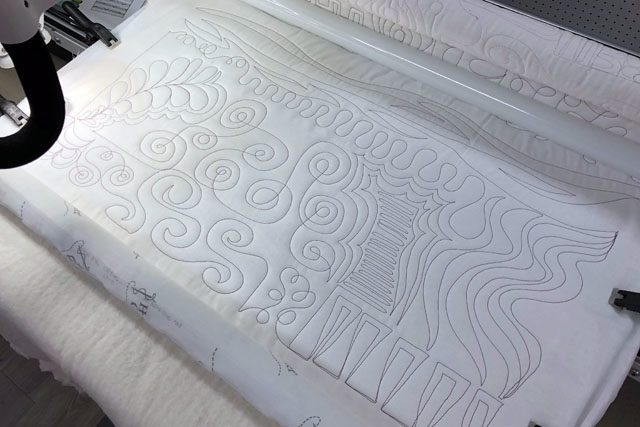
I had enough time and space to play around with all sorts of designs. Some I came up with on my own based on what I’ve seen before, and some were from a Jodi Robinson book that she had in the shop as a reference. I found that I was pretty decent with curvy lines right off the bat — nowhere near perfect, of course, but not completely horrible. I was NOT good at any mofis where I needed to trace back over lines that I’d already sewn — I found tracing very difficult.
I also noticed that I definitely got tired as time went on. I got to the store at 11, and it was probably 12:30 before I actually started quilting since loading the fabric onto the frame was no small task for me to practice and understand. By the time I reached the bottom of my practice sandwich, it was 2:30. When I pulled the whole practice piece off the frame, it was noticeable how my quilting at the top was small and tight and my quilting at the bottom had morphed into much bigger shapes. That will be a good thing to keep in mind for next time, since obviously I will want the quilting to be consistent across a real piece!
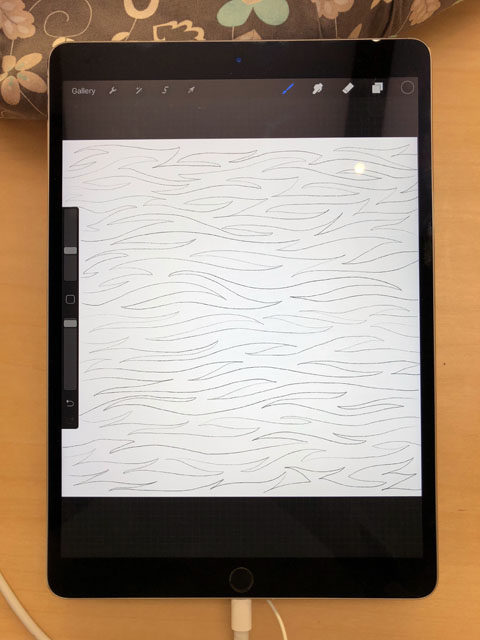
When I go back next month, I’m planning to take my Modern Flag quilt top. I made it almost 3 years ago but it’s been sitting around as “just a top” ever since, so I think it will be a good piece to use as a practice quilt. I’m going to look through some books and blogs before then, but my initial thought is that I’ll try a wavy line motif like the one I sketched above (on an iPad Pro at the Apple store on Friday night, annnnnd now I want an iPad Pro too).
If things go well with the flag quilt, I’m considering using the longarm for my Gypsy Wife. Eek! I get nervous just thinking about that one, because I love the top so much! But I have to remind myself that longarm doesn’t necessarily have to mean super fancy or intricate. So we’ll see — I really haven’t been able to decide how I want Gypsy Wife to be quilted at all, but I’ll have more options on the longarm at least.
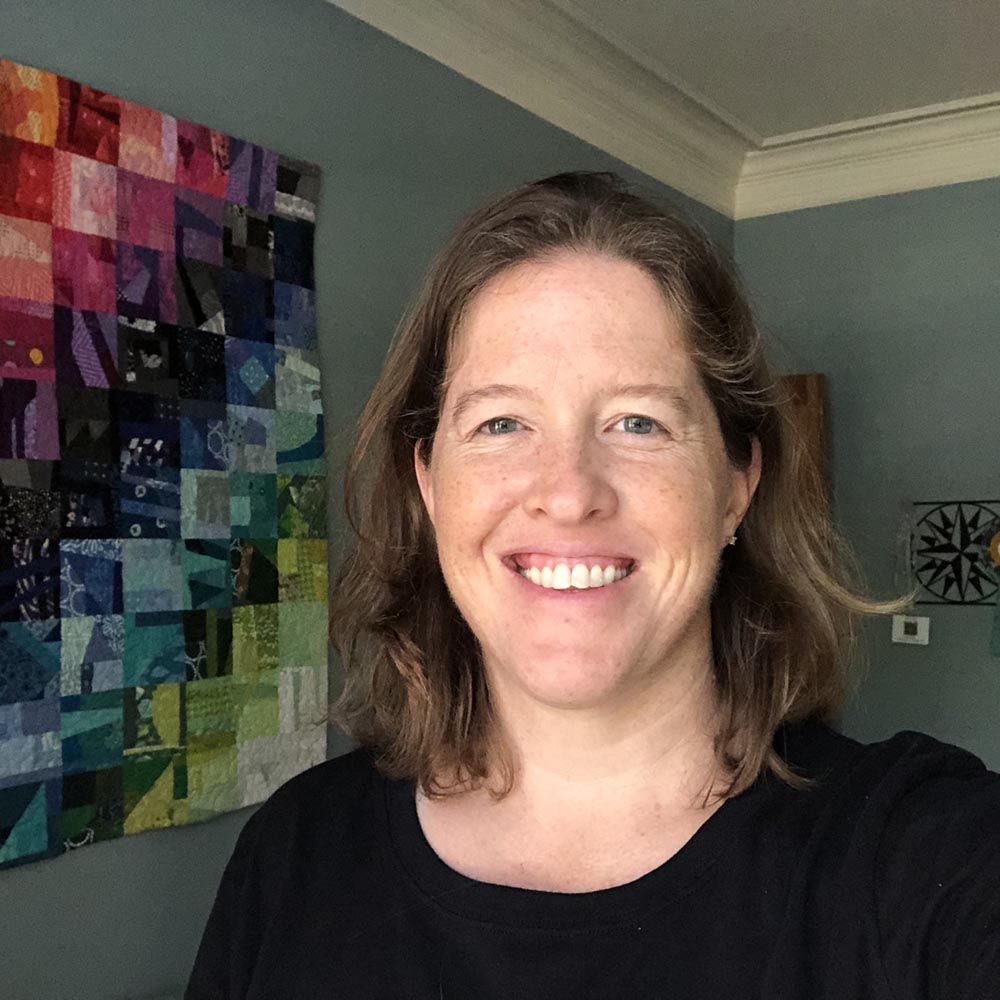
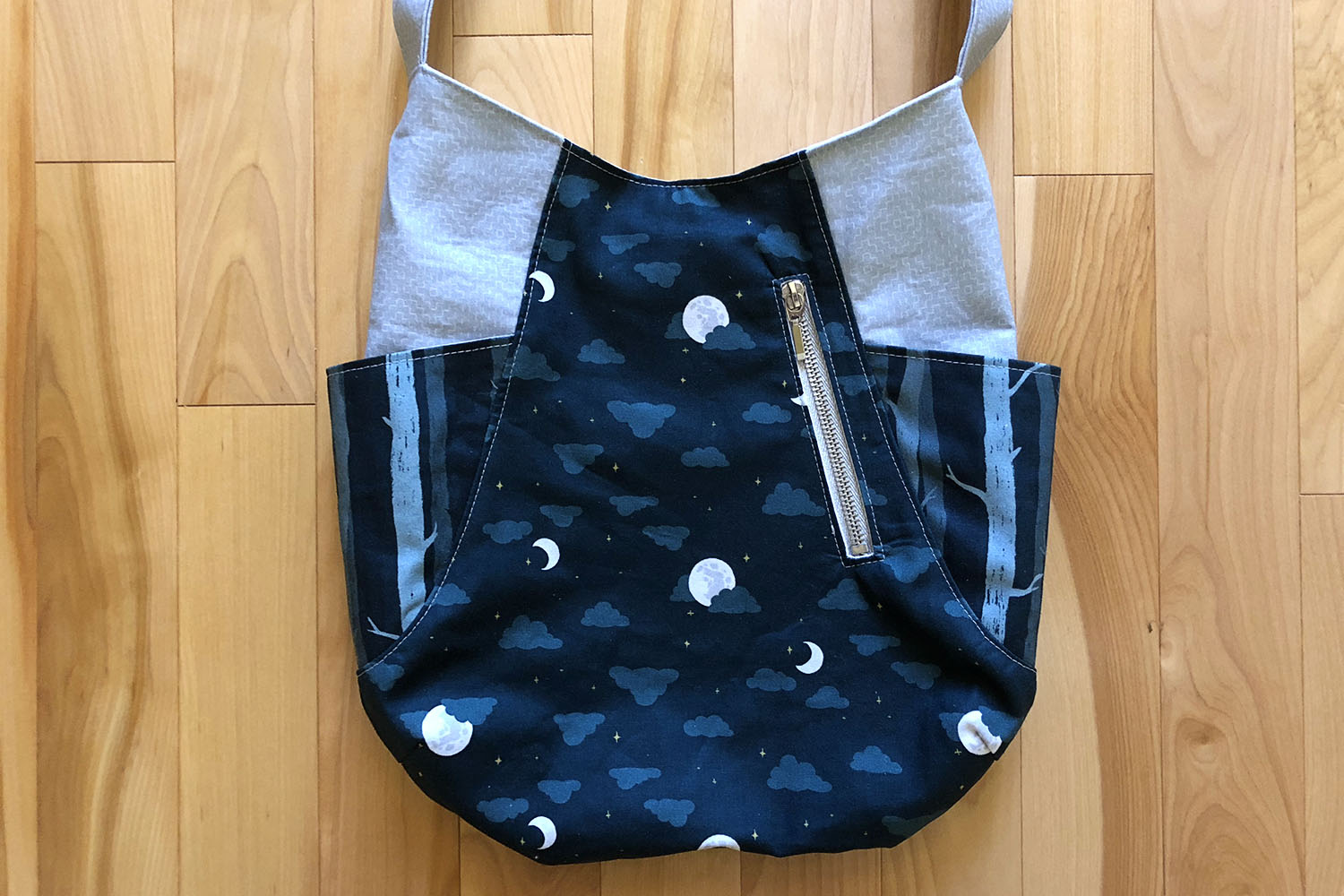







It’s awesome that you enjoyed the class so much and have plans to go back and quilt a top already. I actually find I tend to start out with “quilt big” thoughts and get smaller as I go on. I just like dense quilting and find myself getting smaller and smaller, haha.
Funny! I think my method thus far in my quilting years has been to keep the quilting simple and relatively fast. I don’t usually have patience to spend a ton of time on the quilting. But with longarming, I think that will have to change!
Okay but I still don’t get how you’re actually doing the design. Are you physically moving fabric through a stationary needle, like it’s just a really big sewing machine? Or are you somehow moving the needle itself, like though a digital interface, and the fabric stays still? Sorry, I’m just missing some detail here as I’m trying to imagine this.
No, you’re almost there — on a normal sewing machine, you’re moving the fabric under a stationary needle. On a longarm, the fabric is put on the rollers and stays stationary (until you roll it to the next section) and the sewing machine and needle move over the fabric!